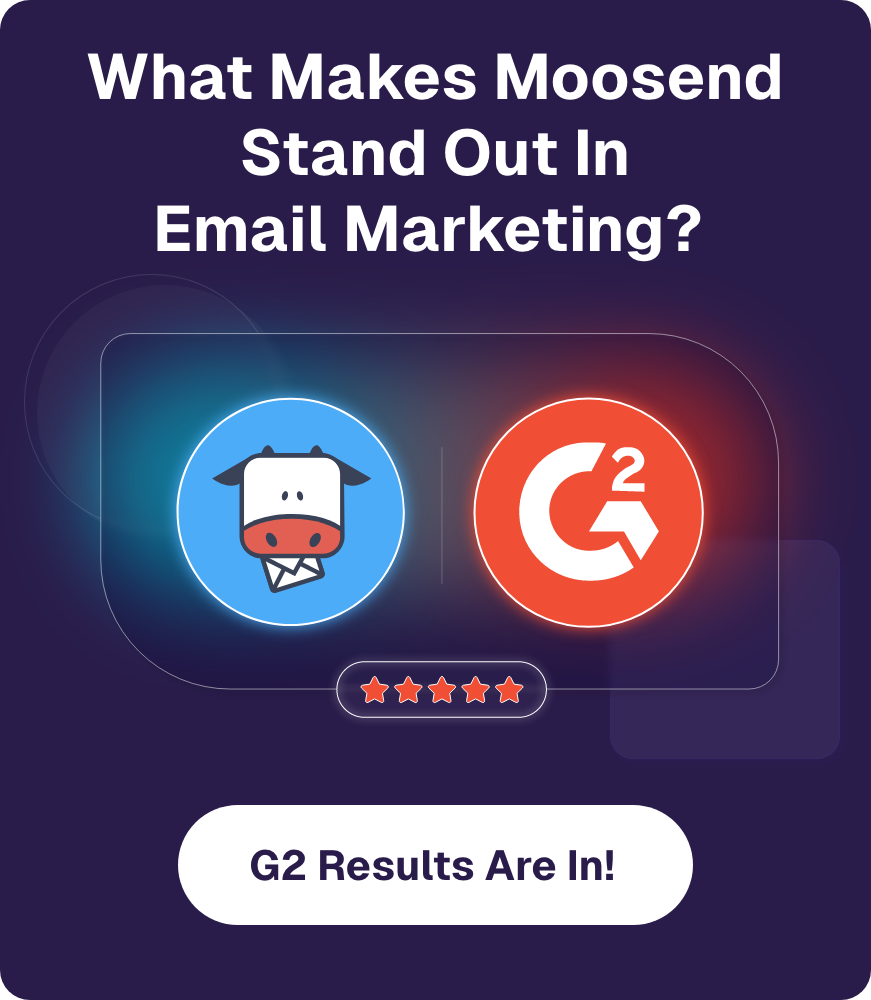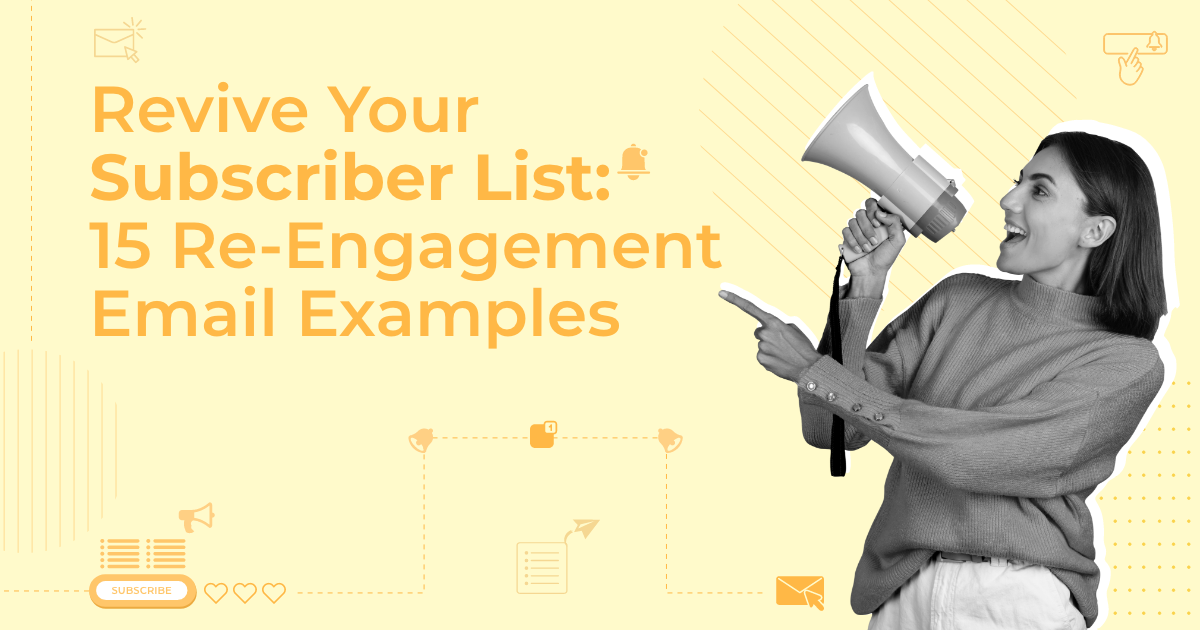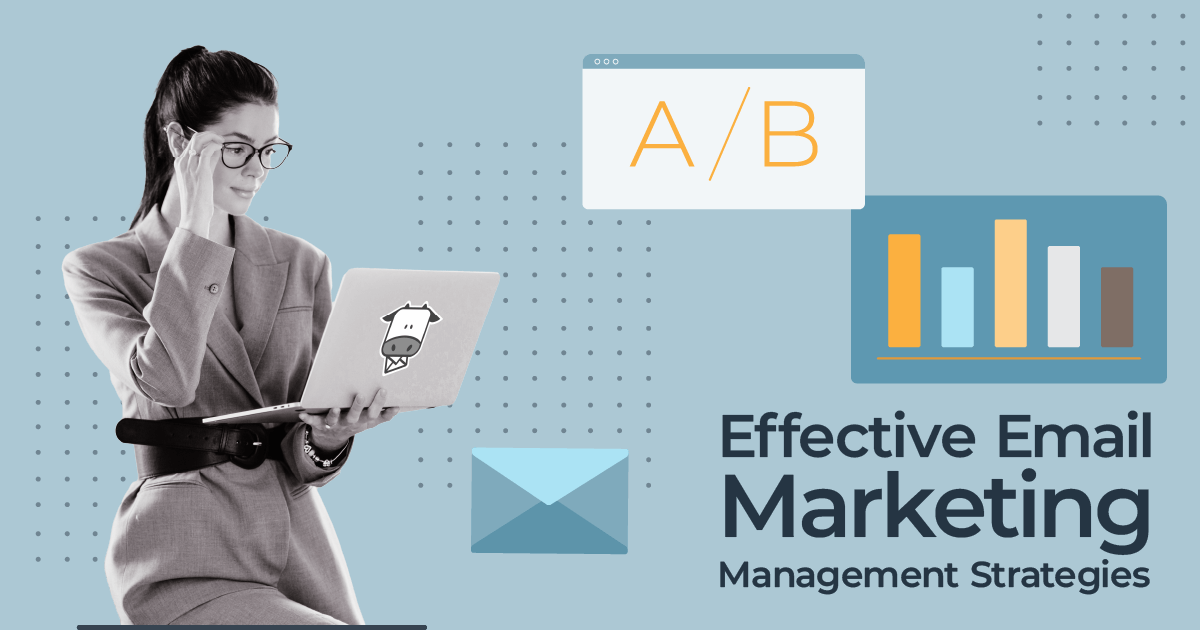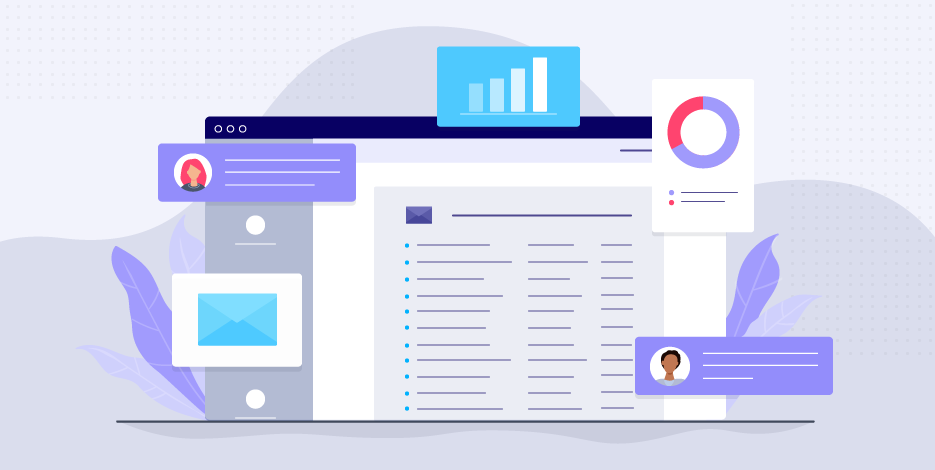
15 Re-Engagement Email Examples To Revive Your Subscriber List
So, you created a list of active subscribers that regularly interact with your emails. Yet you want to spread the word further and acquire new customers.
In your quest to find them, you neglect your current audience, and most of them unsubscribe from your mailing list.
To keep your subscribers interested in your products or services, you need to send them an engaging email to win them back.
Today, we’ll see some of the best re-engagement email examples to get back on track.
What Is A Re-Engagement Email?
A re-engagement email is a marketing email you send out to inactive users to remind them of the good times in an attempt to win them back.
The purpose is to engage with people who have low or non-existent engagement and encourage them to purchase your product or service again or interact with your brand. With this type of email, you can:
- Showcase new products or features
- Tell inactive customers that you miss them
- Offer discounts or free items
In a nutshell, you show people why they subscribed to your product or service in the first place and prevent them from unsubscribing or canceling their subscription.
Benefits Of Re-Engagement Campaigns
So why should you focus so much on re-acquiring old subscribers? Here are the benefits of sending win-back emails:
- Increases engagement and customer retention: As you encourage people to interact with your brand, they are more likely to buy your product, especially if you offer a coupon or discount.
- Reduces churn rate: Re-engaging customers reduces your churn rate (the rate at which people unsubscribe from your email list).
- Improves client relationships: Like in real life, periodic communication is vital to relationships. Since clients are constantly made aware of your products or services, they’re more likely to purchase.
Now that you know a bit more about what re-engagement email marketing is, let’s look at some great examples.
Best Re-Engagement Email Examples
So, here’s the million-dollar question: do you know what an effective re-engagement email looks like? If you don’t, we’ve got your back.
In this section, we’ve included 15 examples that you can take inspiration from to start encouraging people to interact with your brand again.
As a bonus, we’ve also included reactivation subject lines for each email template.
1. Asana – Bring them up to speed
Chances are, your subscribers stopped interacting with you for a while, which made them miss out on updates.
So, you can bring them back by sending them an email like Asana’s:
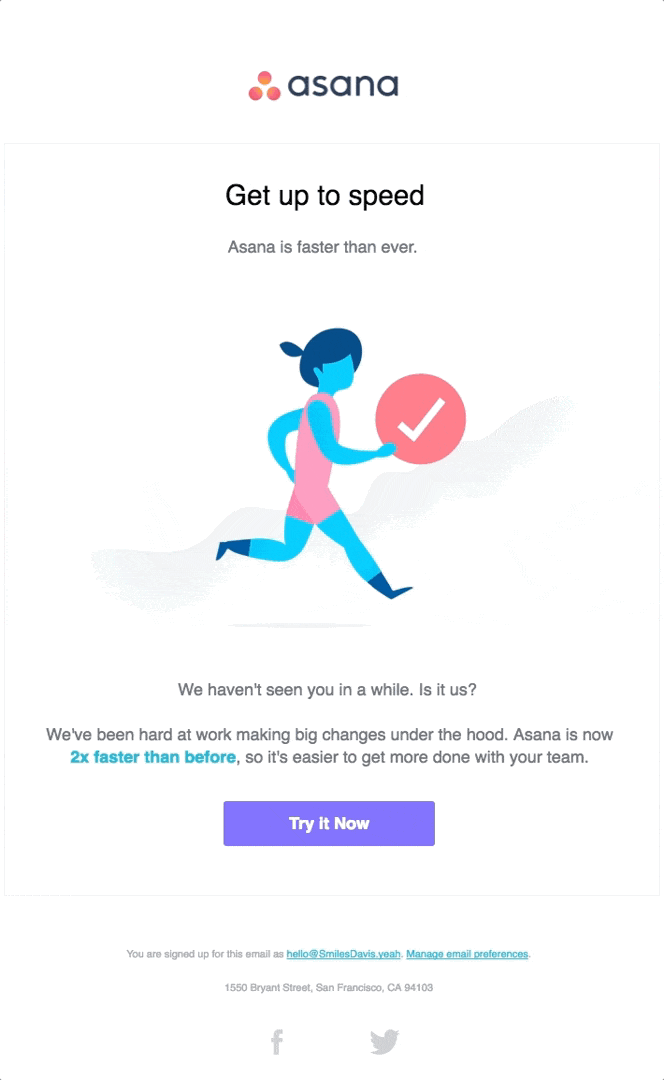
The structure of this email is pretty simple. Start with a compelling subject line that showcases what the email is about, such as “Get up to speed with [Product]!”
Then, like in the example, briefly tell the reader what updates you’ve worked on since the user last interacted with your emails.
To prompt them into action, use a call-to-action (CTA) button to redirect them to the product so they can try the new features themselves ASAP.
How this email inspires action: People will feel more inclined to interact with your product if they’re aware of the changes you’ve made, especially if it now better fits their needs.
Plus, if they liked the software in the past, new features will get them excited to try it again.
Subject line suggestions:
- Since You’ve Been Gone…
- Here’s What We’ve Been Working On
- New [Product] Updates You’ve Missed
2. Juvee – Offer a reward or discount
We all like to get things for free or at least at half the price.
Your subscribers will be excited to receive a discount or special offer for a product or service they enjoy, especially if they don’t have the budget to invest in your product anymore.
Here’s an example from Juvee:
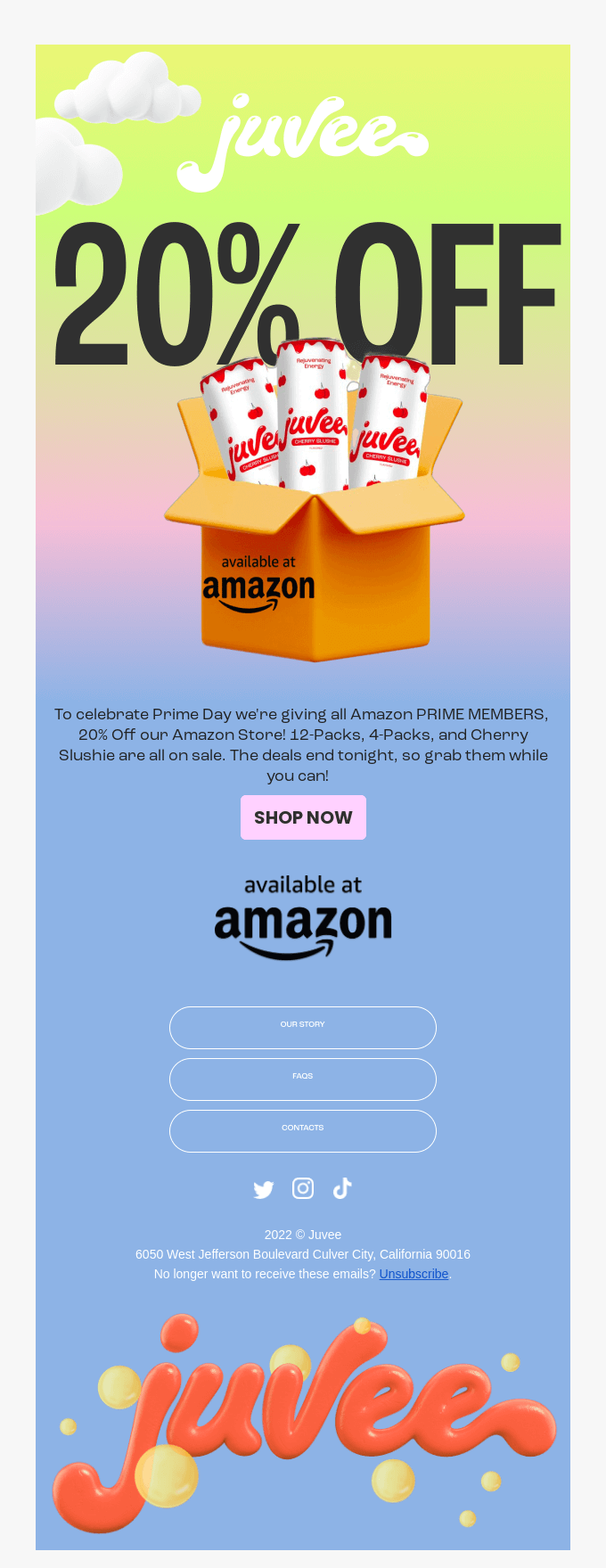
The concept is pretty straightforward: if you’re an Amazon Prime member, you can receive 20% off for packs of Juvee cherry slushies.
If users bought this product before, they’ll be excited to try it again and will re-subscribe to receive the discount.
Plus, the email uses FOMO (fear of missing out) to create a sense of urgency through the phrase “The deal ends tonight” and makes people hurry to sign the deal before it ends.
How this email inspires action: Offering someone a discount for their next purchase is an incentive that will convince clients to continue interacting with your brand.
Subject line suggestions:
- Last Chance Before the Offer Expires
- Get 15% Off Your Favorite Product
- Here’s Your 15% Discount for [Product]
3. Duolingo – Send a We Miss You Email
This is a great tactic for re-engaging your subscribers.
Showing that you miss someone adds depth to your emails and makes your brand human; plus, it adds a sense of personalization that people like and will engage them further.
After all, everyone wants to feel special — and Duolingo knows that.
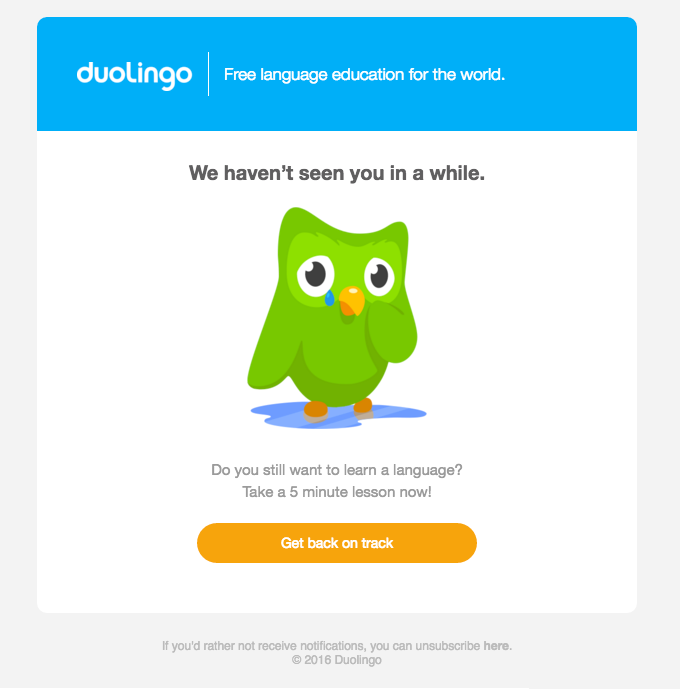
Duolingo tugs at your heartstrings and makes you feel bad for abandoning the poor owl (who can resist that cute face?!).
It’s a short, sweet message that feels sincere, emphasized by the visuals; not many can resist those puppy eyes. The words show the reader how much their presence means to Duolingo and prompt them to get back on track soon.
How this email inspires action: It will make people feel special and show them that they mean a lot to your brand.
Subject line suggestions:
- We miss you!
- Let’s start over…
- Long time no see!
4. Parable – Appeal to their main pain point
Everyone has problems, and they constantly look for solutions to solve them. Understanding your audience means knowing what their main pain points are and offering a way to solve them.
For instance, let’s look at this re-engagement email example.
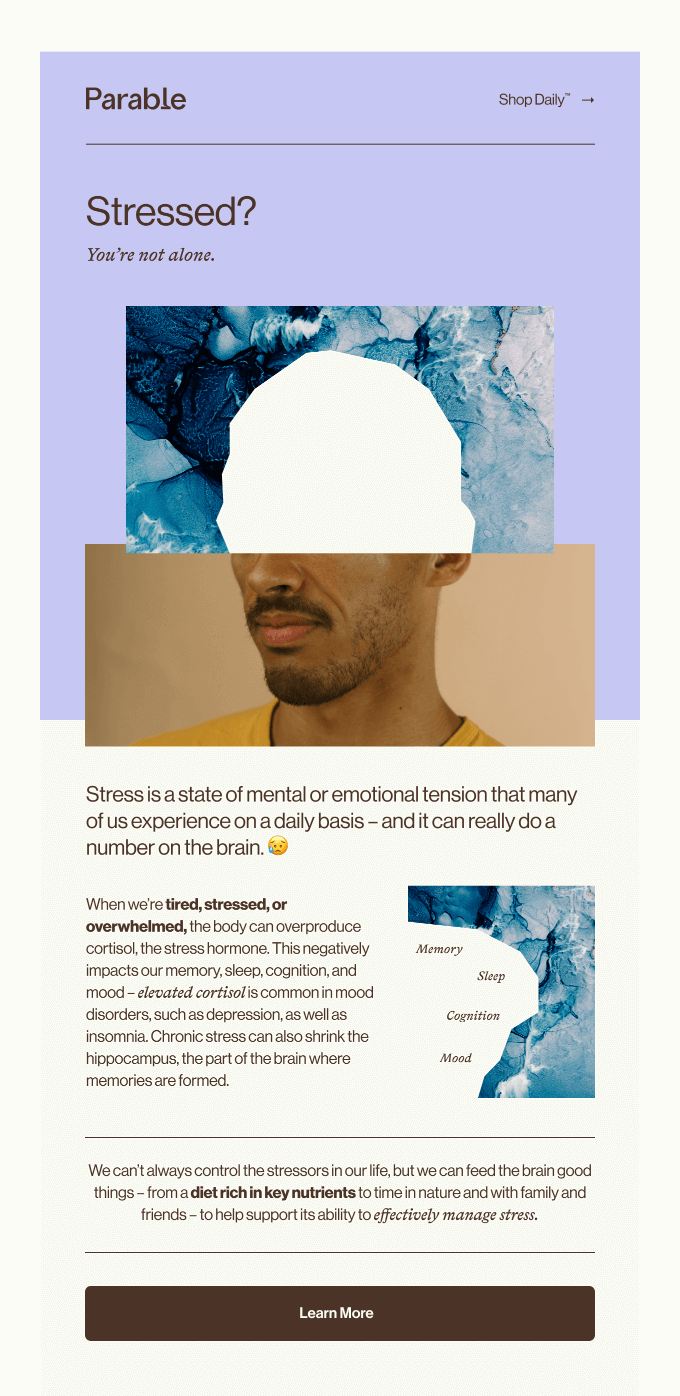
Stress is a mental or emotional state many people experience daily, which affects moods and causes burnout, brain fog, and anxiety.
Parable understands this and offers a solution to equip participants to handle stress and be more calm while also reassuring readers that they’re not alone in this.
How this email inspires action: Offering relevant content will attract inactive customers. Pair it with personalization, and you’ll have a recipes for success.
Subject line suggestions:
- Let’s Talk About [Problem]
- Struggling with [Problem]? We Have the Solution
- Latest News from [Industry] to Tackle [Problem]
5. Surreal – Make it funny
Laughter is the best medicine, as people say. And it’s true!
It relaxes the whole body, relieving physical stress and relaxing your muscles. It also triggers the release of endorphins, which makes us feel good.
So, why not use science in your next marketing strategy by adding humor to your emails, like Surreal:
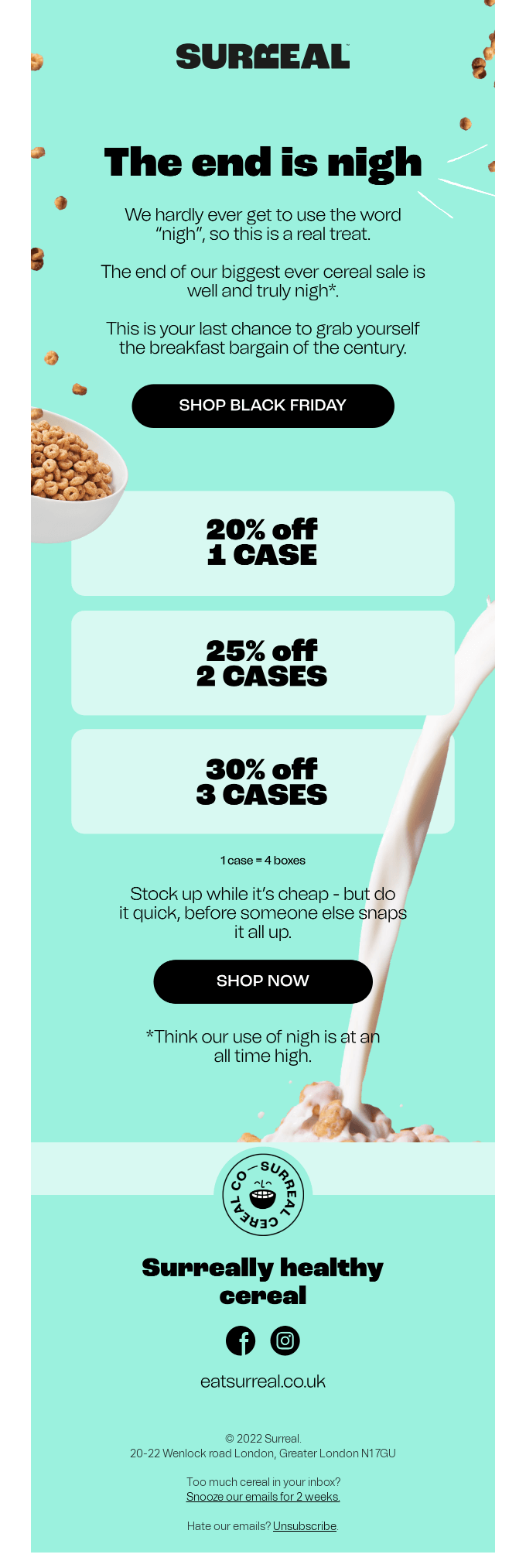
This example is a perfect blend of fun and urgency. Surreal uses FOMO to prompt users to hurry up and grab themselves “the breakfast bargain of the century” through playful sentences and offers discounts to seal the deal.
How this email inspires action: Through humor, your brand seems more authentic and appeals to your target audience (if this is the tone of voice for your brand).
Subject line suggestions:
- This Is Your Last Chance
- The End Is Nigh! Grab Your [Product] Now.
- Hey, We Need to Talk…
6. Jetson – Celebrate meaningful dates
Most of us like our friends to shower us with gifts and congratulations on our special day.
When it comes from your favorite brand, it makes you feel extra special because “Aww, they remembered!” — and you’ll undoubtedly want to keep interacting with a brand that cares about you.
Let’s look at an example for Jetson Health.
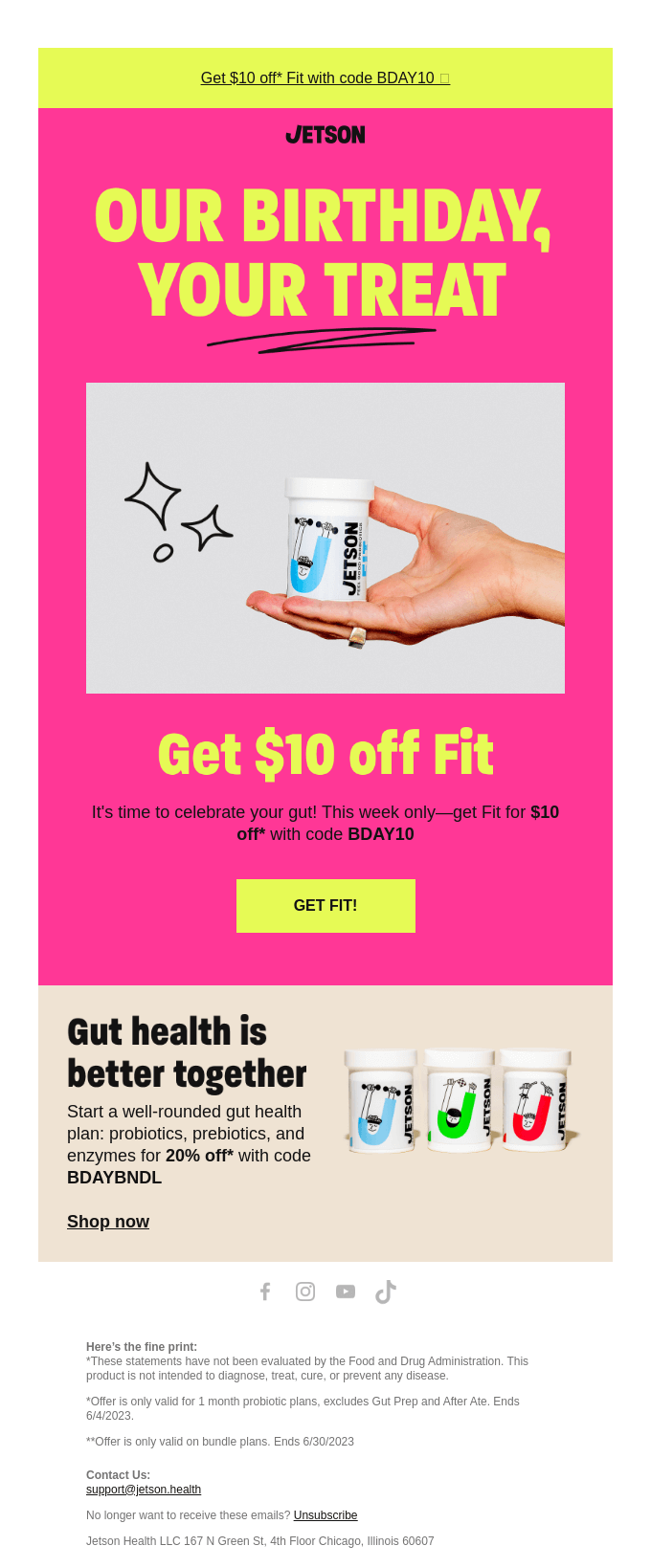
In this case, it’s the brand’s birthday. The message is pretty clear: this brand offers a $10 discount on their product if the user uses the discount code BDAY10 when purchasing the item. There’s even another code for 20% off at the bottom.
This will prompt subscribers to buy it (because who doesn’t like to receive gifts?), and they will certainly look forward to the next anniversary.
How this email inspires action: Personalized email campaigns can increase open and conversion rates and nurture your relationship with existing customers. You can create messages tailored to their needs to increase your re-engagement efforts.
Subject line suggestions:
- Our Birthday, Your Treat
- A Birthday Deal Like No Other
- It’s Your Birthday! 🎉 Celebrate in Style with [Brand Name].
7. Coterie – Celebrate holidays
You shouldn’t just celebrate birthdays or anniversaries with your audience. You can also use seasonal emails for your re-engagement strategy.
Use this to your advantage and re-engage your inactive clients with a hearty ‘Ho ho ho,’ just like Coterie did.

Coterie is a brand that sells home products, so Christmas is a perfect time for them to engage with subscribers to secure a sale.
People will want to buy a pillow or two for their home decor and make it feel cozy during this festive season. You can almost see yourself curled up by the fireplace with hot cocoa and a pillow by your side!
Their heartfelt message also thanks subscribers for their support, which makes them feel special. Plus, their fast and free shipping is an extra incentive: who wouldn’t want to receive their present in time for Christmas?
How this email inspires action: Most customers will be in the spirit of giving during Christmas, Thanksgiving, or Easter, and they’re more likely to buy a product during this period.
Subject line suggestions:
- ‘Tis the Season to Be Jolly, [First Name]! 🎄
- Happy Holidays from [Brand Name]
- Season’s Greetings from [Brand Name]
8. Google – Reward their loyalty
A re-engagement email sequence doesn’t necessarily need to engage inactive subscribers (although that’s the primary purpose); it can also focus on retaining existing customers.
We mean people who’ve been there for you for a while; if you don’t offer them attention, they might move on to greener pastures. To re-engage existing customers, offer them discounts, freebies, or loyalty programs, such as extra points or features.
Let’s take a look at this re-engagement email example:

Google uses this approach and offers access to 100GB of cloud storage and support from Google experts for YouTube Premium members.
Basically, it rewards people for sticking with them for so long.
Google also clearly communicates the benefits so users know and understand what the offer is, which will make them want to use the service in the future.
How this email inspires action: Such an email persuades users to opt in, but it also turns them into repeat clients.
Subject line suggestions:
- Your Gift from [Brand Name] Is Here
- Don’t Forget to Redeem Your Gift
- [Brand Name] Rewards You for Your Loyalty
9. Salt & Stone – Offer personalized recommendations
Personalization is a vital ingredient of any email marketing campaign, so offering personalized recommendations can go a long way.
If you add personalization to your reactivation emails, you can win inactive subscribers back by recommending similar products based on their purchase history or preferences.
Take a look at this example from Salt & Stone.

Aside from promoting the Santal & Vetiver Deodorant and explaining how the ingredients offer 24-hour protection, the email also has a section where the brand displays similar products.
While the deodorant might not spark their interest, the best sellers might. By recommending other products, Salt & Stone incentivizes readers to make another purchase.
Psst! You can also take a look at Moosend’s recipe for success by clicking this link.
How this email inspires action: Since even the most loyal customers won’t know all your products, emailing recommendations based on their purchases will prompt them to act.
Subject line suggestions:
- Check Out Similar Products to [Product Name]!
- Since You Bought [Product Name], Here’s Five More to Try
- Have You Tried Our Latest [Product Name]?
If you want to start creating your re-engagement campaigns ASAP, you can sign up for a free Moosend account today. With a user-friendly drag-and-drop builder, responsive templates, and pre-made workflows you can craft yours in a matter of minutes.
10. Withings – Introduce new product updates and features
Similar to our first example (‘Bring up to speed’), this email newsletter aims to engage users through product updates.
Withings has the perfect example.

Through engaging visuals, this brand creates a re-engagement email that catches your attention.
It lists the changes done to the app (such as the icon redesign), as well as the major improvements and new features. It further explains that Withings 5.15 focuses on performance and has fewer bugs than other versions.
As a result, people familiar with this app who’ve given up on it due to low-performance issues, for example, will be thrilled to discover that it has a new face and works better — and might come back.
How this email inspires action: Such a re-engagement email template will get people excited to try the app again.
Subject line suggestions:
- [Product Name] 2.0: Discover the New Features Today!
- Version 2.0 of [Product Name] Is Here!
- Try Out Our Brand New App!
11. Cuisinart – Ask whether they still want to hear from you
Sometimes, you accidentally send too many emails to your readers, which puts them off.
To avoid getting their inbox swamped with your emails, they might prefer to unsubscribe than continue the relationship. Or they simply stopped opening your emails because your content is irrelevant to them.
Now is a good time to ask them what they want from you. Take this re-engagement email example by Cuisinart:
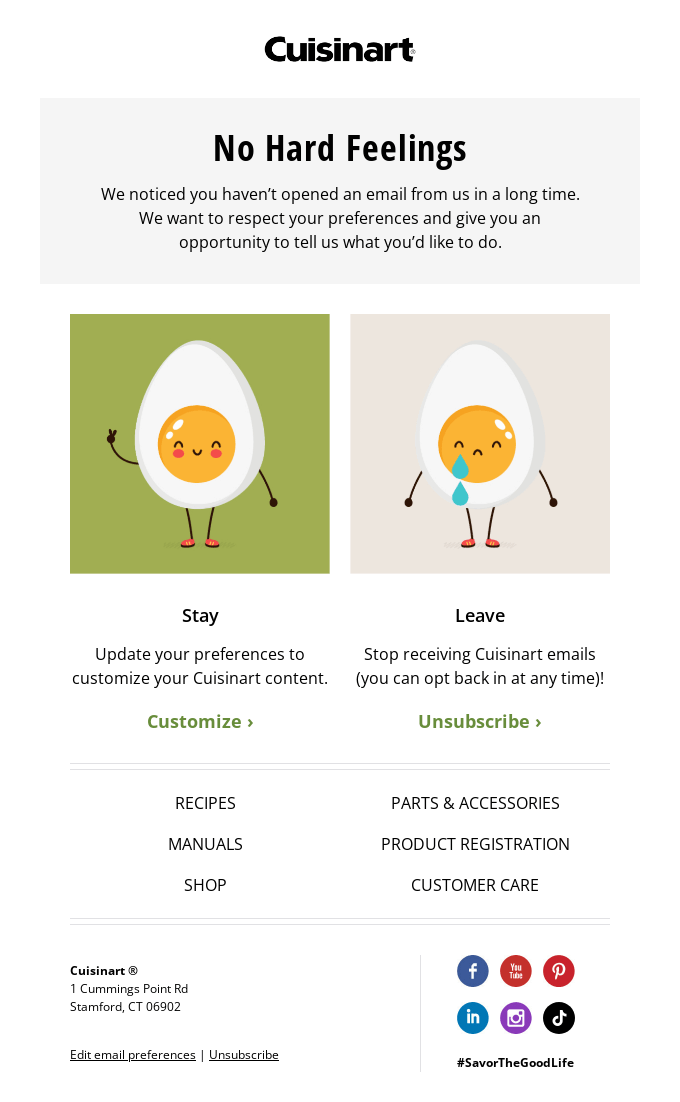
They noticed someone stopped interacting with their emails and wanted to know what their email preferences were. Cuisinart gives subscribers two choices: one to customize their communication and content, the other to unsubscribe.
It also puts the reader at ease, letting them know there are no hard feelings for unsubscribing from the newsletter.
How this email inspires action: The purpose of such an email is to offer the client the option to choose their communication preferences to enhance the customer experience.
Subject line suggestions:
- We Have a Question for You
- Do You Still Want to Hear from Us?
- Update Your Communication Preferences
12. Avocode – Share case studies and customer success stories
Case studies, customer success stories, and community spotlights serve to showcase the value of your product by using stories from real people to emphasize its importance.
So, if your dormant subscribers lose faith in your product, remind them how great it is by adding case studies and customer success stories in your email.

Avocode highlights its solution’s benefits through concrete examples and case studies that will convince the user they made the right decision in the past and that they should continue using the product.
The structure of this email is standard: all you need to do is add a collection of resources, in this case, free e-books, that the subscriber can read to solve their issues.
And don’t forget to add a brief description of the resource and a CTA to boost conversions.
How this email inspires action: Social proof enhances credibility among prospects and existing clients and inspires action.
Subject line suggestions:
- Here’s What People Say About [Product]
- Save More Time with [Brand Name] (Case Study Inside).
- Need Proof That [Brand Name] Is the Right Choice?
13. Wix – Promote a limited-time offer or flash sale
A flash sale email has one main objective: to offer a limited-time promotion or discount. It makes use of a shopper’s impulsivity by creating a sense of urgency around the time-sensitive offer.
Marketers also use these kinds of emails to build brand awareness or boost customer loyalty.
Such an email doesn’t have to be complicated, as exemplified by Wix:
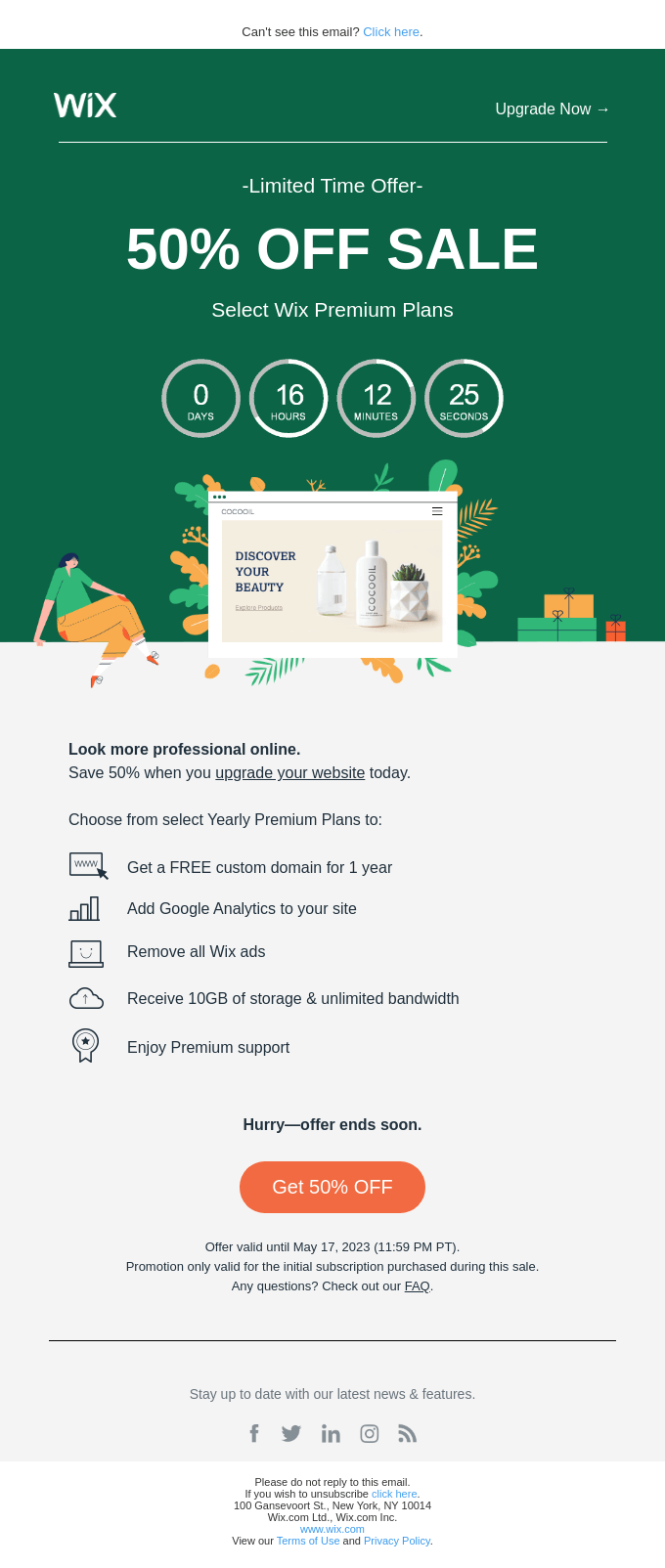
It’s simple, easy to create, and effective.
The user sees all the information they need (what the offer is and for which products), as well as how much time they have before the offer ends.
The countdown is a nice touch that creates a sense of urgency and prompts users to buy a subscription plan before it’s too late.
How this email inspires action: Through FOMO, users will feel more compelled to buy a product they want.
Subject line suggestions:
- Hurry — Offer Ends Soon!
- Save 50% Off Our Products
- Limited Time Offer
14. Shopify – Ask for help or feedback
Do you know what your customers think about your brand? If you have no clue, you won’t know why your existing customer base keeps unsubscribing from your emails.
A good way to gather feedback is to email them. Here’s a re-engagement email example by Shopify that shows exactly that.
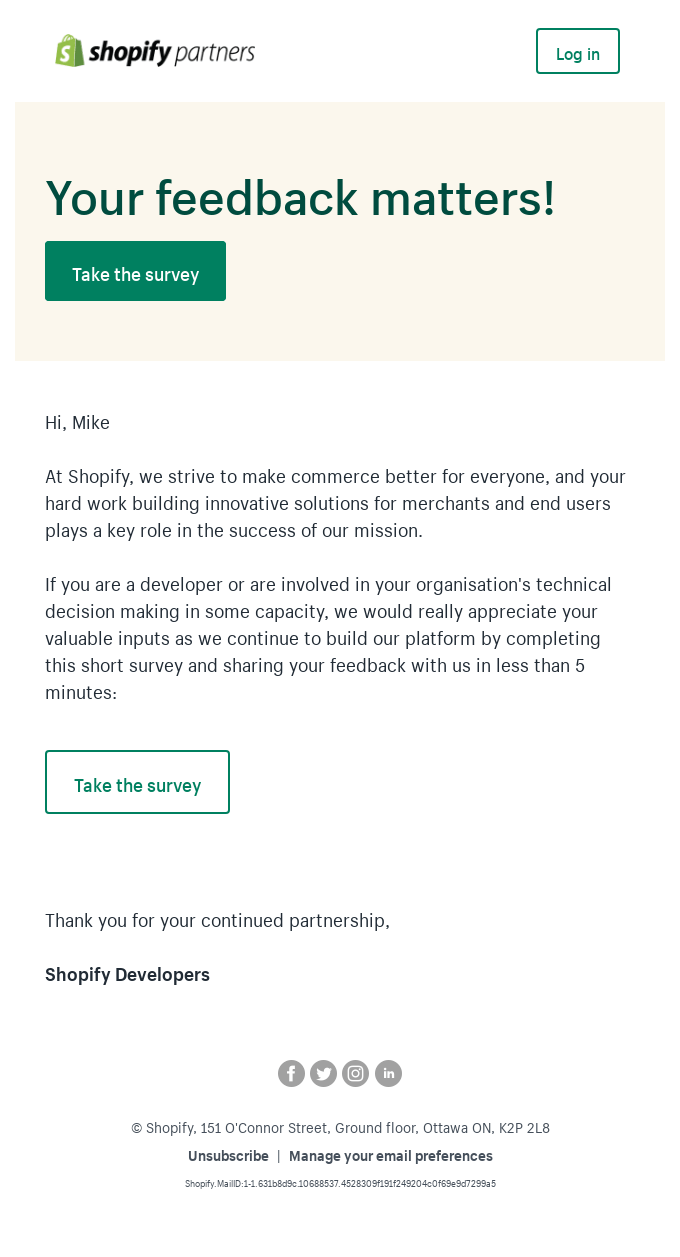
Through this survey, Shopify can gauge customer satisfaction and offer clients a way to leave their thoughts.
By gathering feedback, they can later improve their services for e-commerce companies and create better customer experiences to attract more prospects or retain the old ones.
After all, as a brand, you want to please your clients and satisfy their needs. By constantly listening to their needs and improving your services, clients will keep returning for more.
It also fosters loyalty. If you want to create a survey for your audience, you can take a look at these free survey tools we compiled.
How this email inspires action: Asking customers for feedback will increase the likelihood of them interacting more with your brand, as well as allow your company to improve its services.
Subject line suggestions:
- Penny for Your Thoughts?
- Help Us Improve Our Services
- Your Feedback Matters, [First Name]
15. Buoy – Share valuable educational content
Our last example refers to promoting educational content.
After all, the Internet is a vast source of information, not just for promoting or selling products, as people turn to it when they want to learn more about a topic.
So, revive your unengaged audience by sharing valuable educational content, like Buoy:
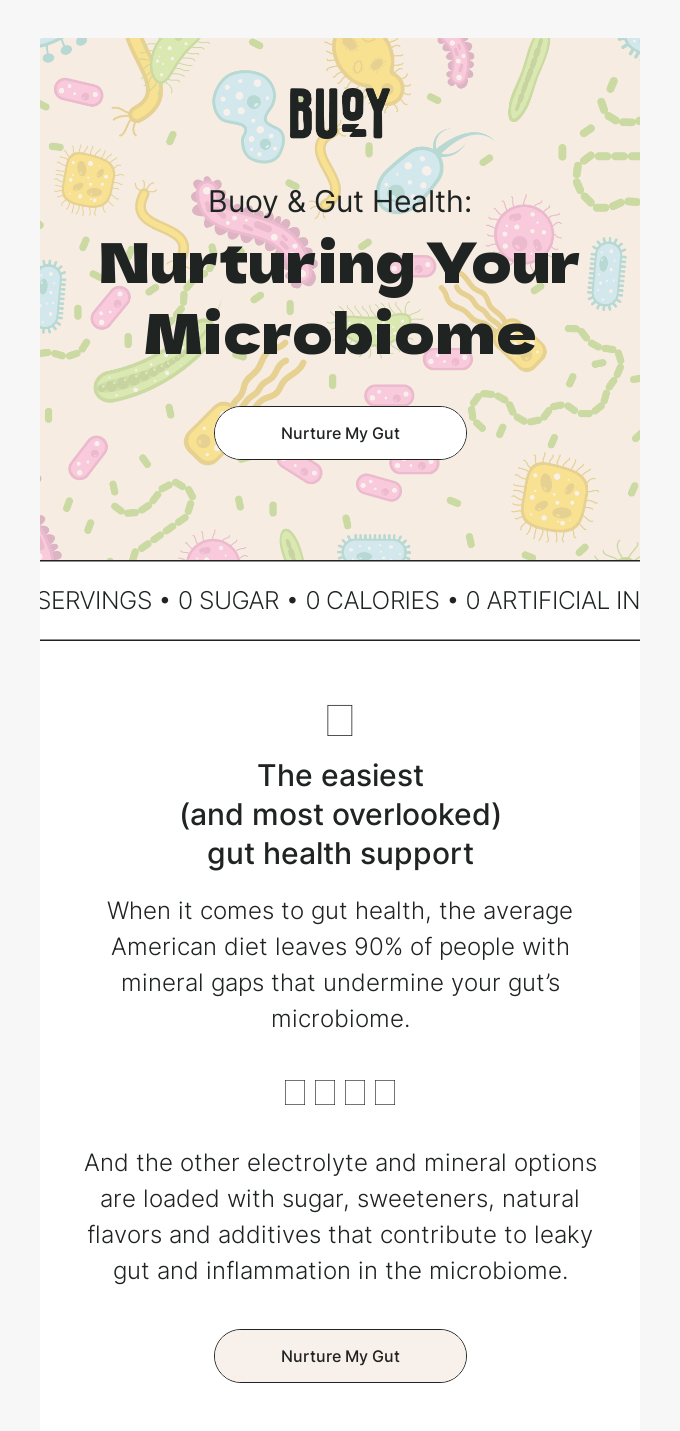
Our example from Buoy educates subscribers about gut flora and how to maintain its health.
They offer an email filled with interesting facts about gut health, as well as how their product helps nurture it.
In turn, people will feel more compelled to invest in the product.
How this email inspires action: Educational content builds credibility and trust and marks your brand as an expert on the topic.
Subject line suggestions:
- Want to Know More About [Topic]?
- Did You Know That…
- Interesting Facts About [Topic]
Did you like our examples? We’ve selected the best ones so you can understand the importance of re-engaging your subscribers. But how do you craft them?
Stay with us as we explore this topic in the next section.
Re-Engagement Email Best Practices
Here are some best practices for crafting the perfect re-engagement emails to make subscribers want to open emails.
Let’s get practical!
List segmentation
While personalization is important in every email campaign, so is email segmentation or email tagging.
Segmenting your subscriber list means dividing your users into different categories based on shared characteristics, like education level, age, or geographic location.
Since each of us is different and has unique needs, doing this will help you choose the best strategy for them.
For example, some might like humor in their emails, while others respond better when you send them valuable resources. Or maybe others simply like to contact you on social media.
If you’re unsure how to do that, you can count on Moosend to break up your list into endless segments based on any criteria you choose.
With their email segmentation features, you can send the right email to the right audience every time.
Email timing and frequency
When is the best time to send emails?
Moosend made it their mission to find out the answer, and what they yielded was this: the best time to send emails is Thursday and Tuesday, which had the highest open rates.
Moreover, 8 – 9 am was the best time of the day to deliver them, while emails sent after 6 pm rarely get opened.
But what we recommend is to consider your industry. For instance, the average open rate for the food industry is 18.68%, while the pharmacy industry had the lowest score (6.13%).
Plus, B2B audiences might open your email depending on the number of emails they receive during the day, while B2C audiences rely on buyer personas (and email segmentation), which makes it more challenging to pinpoint.
Another factor to consider is the timezone; while you send emails in the optimal time window for US audiences, don’t be surprised if people in Europe won’t open it simultaneously.
Measuring campaign performance
Last but not least, measuring your campaign’s performance is crucial. You might think just sending your emails is enough, but knowing how it performs is vital for improving your future campaigns and keeping users engaged.
Measuring metrics such as click-through rates, open rates, and conversion rates is an integral part of any email. This way, you learn what works and doesn’t, so you can make adjustments.
Luckily, most email marketing services have built-in analytics you can use to track how well your emails are performing and work to improve your engagement rates.
Furthermore, Moosend has precise and comprehensive reports that save you time and help you make more accurate business decisions.
Author’s Tip: Discover how to keep your customers engaged with this ultimate guide to email engagement.
Create a Re-Engagement Email Campaign
Now that you checked the above re-engagement email examples it’s time to create yours! The first step is to get creative! Use emojis in your email subject lines, offer incentives and discounts, and make your emails mobile-friendly — the options are endless.
Or, you can use an email marketing tool like Moosend.
Moosend is a solution that will make you say, “Yes, this is the one!” as it offers countless helpful features, like A/B testing, marketing automation, and a newsletter editor.
It also has excellent email deliverability capabilities. By enabling and setting up a sender policy framework (SPF) and IP verification, you can send the right messages at the right time.
Plus, its automation will improve your sender reputation in the long run.
Try Moosend for free by registering now.
